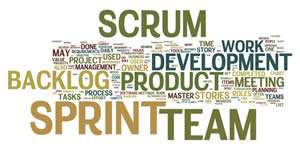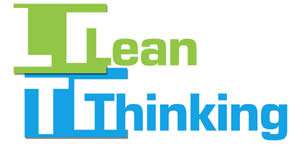Project management has evolved rapidly, especially over the last 50 years or so, and this means that there are now a number of different approaches taken for managing projects, each of which are popular with relevant industries and applications.
The Traditional Approach
The traditional approach involves following a series of five stages which are usually found when managing projects. These five stages are:
- Initiation
- Planning and design
- Execution
- Monitoring and controlling systems
- Completion
It is important to remember that some of these processes may occur at the same time or, if the project needs dictate, some may not even occur at all. Some projects may also go through some stages several times as they are reviewed and evolve.
This approach has been appropriated and modified by different industries; examples include the Waterfall Method which follows a systematic approach, and Requirements Management, which is used to develop and define the behaviour of software. Alternatively, it might simply be known as problem solving.
Critical Chain Project Management (CCPM)
Critical Chain Project Management was developed by Dr Eli Goldratt in 1997 as an alternative to perceived failures in the traditional approach. In brief, the system works by identifying the Critical Chain (defined as the longest chain of dependent tasks) then cutting task estimates in half, and inserting "safety buffers" between tasks. Priorities are set and execution is carried out with continual focus on each task until completion. This is backed up with continual reviews that ensure projects stay on target and deviations are addressed in the shortest possible time.

PRINCE2
PRINCE2 (an acronym for Projects in Controlled Environments) is a product-based approach to project management, and was established in 1989 by CCTA (the Central Computer and Telecommunications Agency), since renamed the OGC (the Office of Government Commerce). It is widely used in the UK both in the Public and Private sectors, and is now the de facto standard within the UK. Many organizations actually stipulate the project managers involved are PRINCE2 certified when setting up the details of tenders etc.
The core elements of PRINCE2 concentrate on business justification, defined organizational structure, product-based planning, executing the project by dividing it into bite-size components, and remaining flexible at all levels of the project.
For organizations, PRINCE2's recognition of responsibilities within a project, along with its focus on project deliverables (the WHY, WHEN and FOR WHOM) provides an organization with tangible benefits of control, consistency and structure of both tasks and review cycles.
Agile Project Management
Derived from software development, Agile is a popular project management method that views a project as a series of smaller tasks to be accomplished, and which are designed to fit around the flow of the situation instead of being constrained to a rigid pre-planned process. Agile project management is a popular method especially favoured by the software development and creative industries.
There are two main advantages of this method. Firstly, it is logical, since it constantly examines the project being developed. Secondly, it is the only project management technique which incorporates client involvement - as long as the client is able to invest their time into project involvement.
Agile embodies many different project management methods, including the following:
Scrum - A complete approach which concentrates on iterative goals as decided by the project owner. These goals are then refined by the delivery team and carried out by the scrum master
Crystal clear - which focuses on making sure that relevant information is easy to understand
Kanban - The method of performing work through a defined set of instructions
Scrum ban - This technique also uses both the Scrum and Kanban approaches, enabling projects to be managed in a new and consistent way.

For many, and specifically those within the IT industry, Agile is better than PRINCE2 primarily because it is more flexible, hence the name Agile. In trying to respond, those controlling the curriculum of PRINCE2 have started to try and incorporate more of those lessons learnt from Agile into their approach. For this, you can now even find PRINCE2 Agile Practitioner courses.
Lean Project Management
Lean Project Management is a method which uses the concepts originally derived from Lean Manufacturing. It has parallels with lean construction and lean manufacturing, with the aim of delivering projects while minimising time and waste.
The are many ways to do this, but the two most common methods are:
- The 6 Sigma DMAIC method -- This uses 6 Sigma Black Belts to take a project through the steps of Define, Measure, Analyse, Improve, and Control
- The Deming Cycle or PDCA -- This is based on the methodology of "Plan-Do-Check-Act(/Adjust)

Extreme Project Management (XPM)
Extreme project management is often used by industries that deal with constant change; examples are the mobile phone and software industries. The common theme in these businesses is that it isn't easy to gain a proper and stable understanding of requirements, and outcomes may be heavily affected by changes in external factors, especially the market.
XPM requires an acceptance of high unpredictability and therefore a need for fluidity and rapid change. A main focus is on the human side of project management (e.g. managing stakeholders), rather than on formal and often theoretical processes for scheduling tasks and assessing progress.
Benefits Realisation Management
Benefits Realisation Management is an enhanced project management technique which concentrates on the benefits of a project instead of its products or outputs.
Throughout its cycle, the project is constantly assessed to check that its progress is in line with producing the key benefits, and this helps to minimise the risk of underperformance or even failure.
This technique also aims to co-ordinate project outcomes with business strategies, and this has enabled it to become popular with a diverse number of industries around the world.
Summary
As you can see, there is no "one size fits all" method when it comes to project management and some industries favour one technique over the other. What is common, of course, is that they all aim to manage the project in an efficient way, and if they are properly implemented by people who fully understand them, the upfront investment in planning and management will repay itself many, many times over in greater efficiency and effectiveness.



























